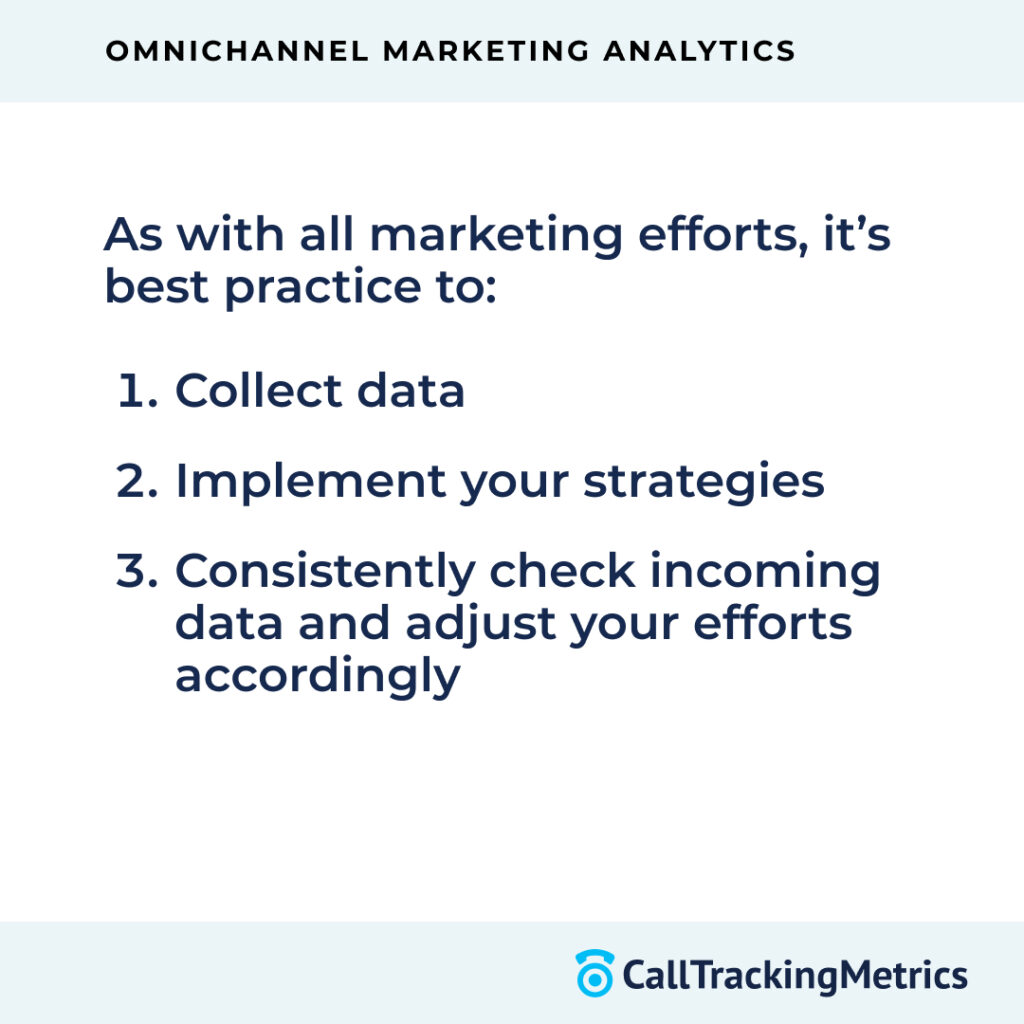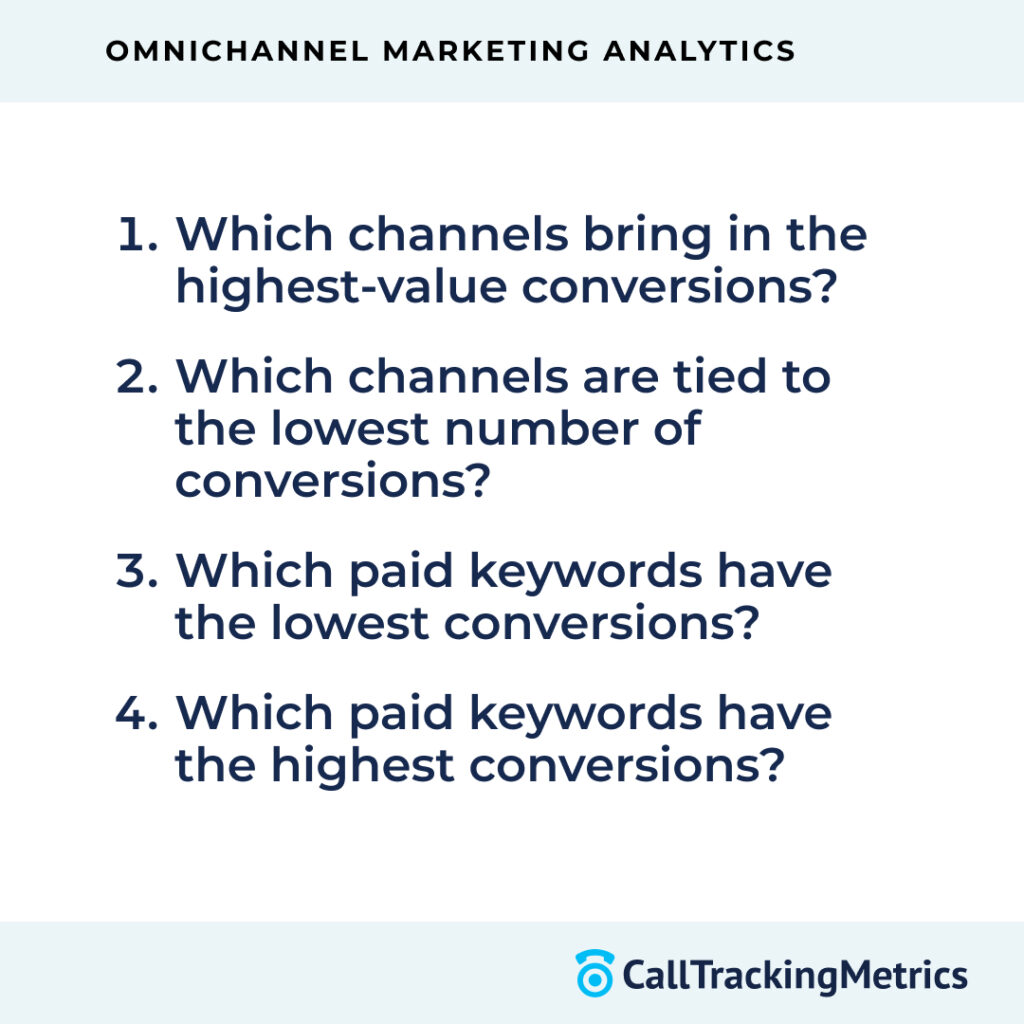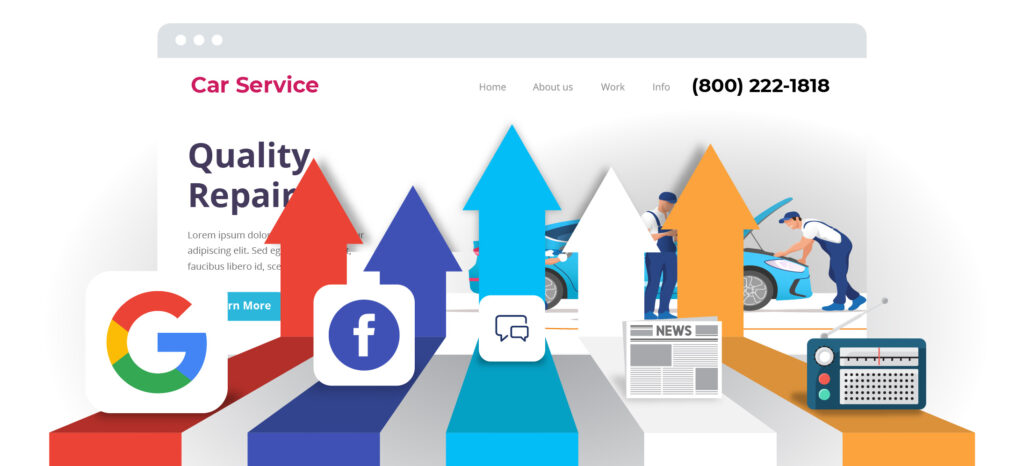Omnichannel Marketing Analytics: Get the Full Picture
Read Time 4 minutes
Omnichannel marketing and communications are essential if you want to stay competitive today. Gone are the days of communicating with your customers on just one or two platforms. Today’s buyer’s journey encompasses far more touchpoints than ever, with an average of eight touchpoints before a conversion occurs.
Organizations must communicate on a variety of platforms and engage their customers with consistent, branded, and valuable messaging to deliver a true omnichannel communications experience and win sales.
If you don’t have a current omnichannel communications strategy, it’s time to build one. This is the first step to successful omnichannel communications. (You can learn more about that in our blog Why You Should Adopt an Omnichannel Communications Strategy.)
But, if you are already engaging in omnichannel marketing and communications, it could be time to take it to the next level.

Beyond An Omnichannel Communications Strategy
Omnichannel communication strategies aren’t new, however, it’s important to understand that these strategies aren’t a set-it-and-forget-it approach. In fact, a solid omnichannel communications strategy should be fluid and adaptable.
As technology continues to advance at an unprecedented speed, so, too, do communications platforms. Your audience is continually changing parts of their communication behaviors and where they like to communicate with you. Staying on top of these new behaviors, channels, and ways to communicate with your audience is a vital part of staying relevant.
Consider social media platforms alone. In 1997, Bolt and Six Degrees launched the first true social media platform, (yep, that was the first). They were quickly followed by Friendster and MySpace, and then of course Facebook.
Today, there are nearly 130 social media sites. Facebook leads the way with more than 2.9 million monthly active users worldwide!
As these communication platforms continue to evolve, your strategy should too. This will enable your organization to continually meet customers and potential customers where they are with the information they want–and anticipate where they’ll go next (and be there too!)
Not only will this grow your brand awareness and increase your trustworthiness, but it will also give you an edge over your competitors by being in the right place, at the right time, with the right message–every time!
Sounds great, but how do you do this?
- Omnichannel marketing analytics and first-party data from all of your marketing and sales platforms and
- Communication tools paired with AI-powered tools to extract, sort, and classify data for easy analysis.
Omnichannel Marketing Analytics

Getting data across all of your platforms is vital for business success. If you can’t track the performance of all of your efforts, you simply can’t make smart business decisions.
If you are using an omnichannel marketing strategy, without this comprehensive data, you’ll be relying on instincts alone. And while your instincts may be good, instincts + data are even better.
“I often tell our clients that marketing without call tracking isn’t much different than gambling. If you don’t know what works and what doesn’t, achieving sustainable success in marketing is highly unlikely.”
-John Thornton, CEO of Black Propellor
Read Black Propellor’s Case Study (Spoiler Alert: After switching from CallRail to CallTrackingMetrics, Black Propellor’s customer retention rate grew to 70%!)
This next step – employing omnichannel marketing analytics – is made possible with call tracking. Call tracking closes gaps in data to give you the full marketing attribution picture for both online and offline activity.
Call Tracking for Full Omnichannel Communications Analytics
Gaps in data can hurt any organization. When it comes to omnichannel communications and marketing attribution data it’s no different. Using incomplete data in marketing, sales, customer service, and product development can lead to costly mistakes with negative, long-term impacts.
However, with this comprehensive marketing attribution data, you can maximize your marketing, sales, and customer service efforts and deliver an exceptional customer experience across all touchpoints. Data shows when customers have a great experience, they not only come back for more –they refer others.
Call tracking works by using dynamic number insertion (DNI) that automatically or dynamically ‘swaps’ the number displayed based on where your user is coming from including:
- Location
- Source
- Keyword searched
- Ad campaign
- Custom triggers
This enables you to connect online activity, like a paid ad, with an incoming phone call or text. You can also then connect offline marketing efforts, like a billboard, bus wrap, or event collateral, to calls as well.
For certain industries like healthcare, legal services, home services, and more that rely on phone calls, call tracking is crucial for complete data to fuel strategic decisions.

The more channels you are using (and you should be on several for an effective omnichannel communications strategy) the more important this full attribution data is. After all, the more channels you’re communicating on, the more money you’re spending. It’s important to spend those dollars wisely.
Comprehensive closed-loop attribution data makes this possible.
Once you have the data on all of your touchpoints in your omnichannel communications, it’s time to take a look at it. When it comes to this data, what you can do with it is vast. However, when it comes to omnichannel marketing analytics, there are a few points you must consider:
- Which channels bring in the highest-value conversions?
- Which channels are tied to the lowest number of conversions?
- Which paid keywords have the lowest conversions?
- Which paid keywords have the highest conversions?
With this information, you can guide strategies across your entire organization and solve for:
- Sales and marketing misalignment
- Messaging inconsistencies
- Poor performing paid ads
- Miscommunicated messages
With such comprehensive data and an omnichannel marketing analytics strategy, you’ll know exactly which of your channels, ads, keywords, and messages perform the best–and which don’t– so you can stop wasting money on efforts not driving conversions and focus on those that do.
When you find the best messaging, keywords, channels, and ways to connect with your audience, you can replicate these efforts across all of your omnichannel communications to maximize your results across the board.

As with all marketing efforts, it’s best practice to collect data, implement your strategies, then consistently check incoming data and adjust your efforts accordingly. Instincts, creativity, and skill are vital to marketing success, but the importance of data should never be overlooked.
Call Tracking and Marketing Attribution: Comprehensive Data and Communications All in One Place
It’s important to note that certain software platforms, like CallTrackingMetrics, offer not only call tracking and comprehensive marketing attribution, but also integrations that enable marketing and sales teams to keep using their current tech stack.
Teams are able to integrate through no-code and low-code integrations, and an open API makes it easier for developers to connect with nearly any platform. These integrations make it possible for teams to have all of their attribution data in one easy-to-view place. This helps to align teams around the same data leading to better sales outcomes.
Final Thoughts
Marketers need to adjust and expand their communication strategies today in order to meet their target audience where they are. Omnichannel marketing analytics helps you know where your customers are spending time and which messages are resonating the most, so you can replicate those efforts across channels and experiences to keep your pipeline full and drive more valuable conversions.
Dive deeper into omnichannel communications in our eBook: How to Build Your Omnichannel Communications Strategy.